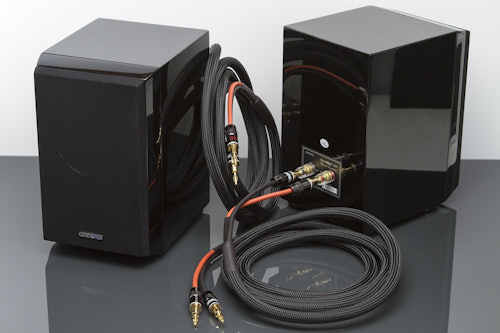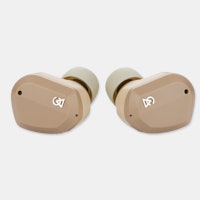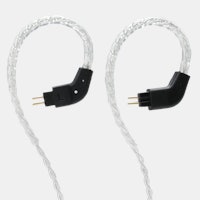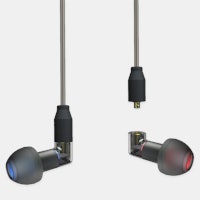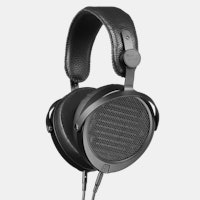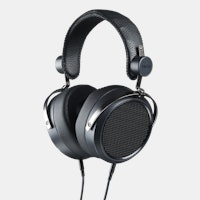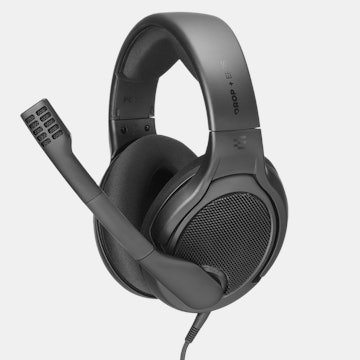Click to view our Accessibility Statement or contact us with accessibility-related questions96% would recommend to a friend 









CEntrance Reserve Series Speaker Cables
CEntrance Reserve Series Speaker Cables
bookmark_border
Where's the price?
To negotiate the best possible price for our customers, we agree to hide prices prior to logging in.
840 requests
Product Description
With a solid build that lives up to the CEntrance name, the Reserve Series speaker cables feature polyethylene insulation on the inside and a polyester grain finish on the outside—delivering strong environmental protection in a sleek package that'll stand the test of time. Using patented MultiBraid technology, these copper cables offer incredibly high reproduction accuracy, and the gold-plated terminals feature low connection impedance Read More
Customer Reviews
4.6
(33 reviews)
5star(23)
4star(8)
3star(2)
2star(0)
1star(0)
search
close
Images
keyboard_arrow_downSort by: Newest
keyboard_arrow_downJc84
2
Jan 18, 2021
checkVerified Buyer
Great cables
For the price these out preformed my more expensive audioquest rocket 33 cables. Love the feel and weight on them too.
Recommends this product? Yes

dbsail5
6
Oct 27, 2020
checkVerified Buyer
very happy with the sound quality
well made
Recommends this product? Yes

Der_Klaviermann
217
Oct 27, 2020
checkVerified Buyer
Very good cable
I don't have much experience with different speaker cables. However, in comparison to the Monoprice Monolith cable, I enjoy the sound of these cable better. The difference is marginal but audible.
The build is good and perform well with my speakers (LS50). I would recommend these!
Recommends this product? Yes
JavierCF
7
Jul 31, 2020
checkVerified Buyer
Till now better speaker cables I have on this (and higher) range of price. 2 pairs, no trouble.
Recommends this product? Yes
HeilenArtist
0
Jul 10, 2020
checkVerified Buyer
Old speakers have new life with these premium cables
I am so happy with the build and sound quality of these awesome cables! They turned my 7 yr-old speakers Into a whole new listening experience- the stroke of a acoustic bass bow, the rimshot of a drum, the full dynamics of a jazz ensemble, they are all delivered seamlessly.
Recommends this product? Yes

kenwstr
121
Jun 27, 2020
checkVerified Buyer
I bought these some time ago and have used them to connect my Pioneer A400 amp to a pair of ProAc Extended Base Tablet (EBT) speakers. All this is vintage gear but very good vintage gear. The amp is 60W and the speakers 6-ohm nominal. The ProAc tablet series were a real breakthrough in bookshelf speakers and are still very sought after today, particularly the signature series. The EBT extends the lower bass frequency response a little.
Many people say that speaker cable doesn't matter. Well I suppose you can have that experience in most aspects of HiFi because, the only upgrade that makes a substantial difference is the one where you upgrade the worst piece of kit in your system. The fact is that whatever is worst in the signal chain nobbles the whole system. It doesn't matter how good your amp is if your speakers a terrible, & it doesn't matter how good your speakers are if the source driving them is bad. Either way will give you bad sound. In my experience, for most system that were lashed together on the cheap, the speaker cables are generally that worst element and in that case, upgrading them will make by far the biggest and most astonishing (night & day) improvement the owner has ever heard. This is not always the case however, just the usual thing I encounter.
For passive speaker cables, the 1st and most important property is low impedance (up to a point). Impedance matching is a basic underlying principle in all audio equipment. In most cases, manufacturers take care of this for you but there are a few exceptions. In PA, the way you connect a guitar pickup is one such exception, passive speaker cables are another. With passive speakers cables, impedance is of major importance up to a point. What is impedance? It is the combined effect of electrical properties, DC resistance, capacitance and inductance that impedes an electrical signal (AC). The amount that a signal is impeded depends on the frequency of the signal. For simplicity a nominal impedance is often stated, though this does not intuitevely reveal the frequency filtering effects that can occur.
Equipment manufacturers generally take care of this for you by making the output impedance of equipment hundreds or even thousands of times less than the input impedance. This is called impedance matching and it ensures the clarity and tonality of the signal is preserved. The problem is that when you connect a passive speaker that is as low as say, 4-8 ohms impedance, this means that the combined impedance of everything driving that, the amps output, plus cables, plus crossover, plus connectors must have an extraordinarily low impedance. Something in the order of 100 times less, so < 0.04 ohms for a 4 ohm speaker. The cable has to fit within this impedance budget. If it does not, while you still hear sound and music sounds like music. The clarity and tonality may suffer and sometimes quite substantially. The aim of all this is basically to try to get the low pass filtering (LPF) effect of the cables above 20kHz frequency which is considered the usual upper limit of human hearing. This is not a big ask, but in this respect, cables do matter at least up to this point. The usual solution in copper cables is simply a function of gauge and run length. The longer the cable, the thicker the conductors need to be to take care of DC resistance but this is by itself not enough. Cable construction very much influences capacitance and inductance. The dielectric properties of the insulative jacket & conductor spacing are important. All these things influence impedance not just simply gauge and length. Still, it’s not a big ask.
In my experience, including 30 years managing an auditorium PA, this is not as simple as it seems because performance specs on cables are almost never made available. If they are published by a reputable audio cable manufacturer, your better off going with what you know. If the specs are not available, you have to resort to trial and error which is an expensive time-consuming exercise. Personally I have always avoided the boutique cable market with their esoteric meaningless statements not backed up with any data.
I bought these Centrance because the price was good for an already made up cable. I tried them against some short 14ga zip chord because that is a basic entrance level standard. Unsurprisingly, the Centrance won that race by a country mile. Clarity and tonality are of a very high quality. The fast attack gives percussion quite a lot of punch and strings, oh so much subtle detail, it sounds as real as real could be.
I do have some misgivings about the banana plugs though. I do not like connectors that are made up of separate bits of metal. Like the screw on ends and the twirly bits of expanded metal intended to create spring loaded contact. IME these are likely places to harbour corrosion and create high impedance contact and reliability issues over time. Yes, gold alloy plated connectors do corrode too, especially in contact with dissimilar metals. I prefer solid single piece contacts. For the moment thought, they are working great and a bit of Deoxit gold will help them continue to do so.
The Centrance cables are little on the short side. They are fine for a small to medium room stereo setup where the amp can be placed between the speakers. But their length limits flexability.
Despite these concerns, I give it 5 stars because it's an excellant performance product for the money.
(Edited)
Baldurv
0
May 27, 2020
checkVerified Buyer
Good product for the money!
It might be placebo but I swear I can hear a difference between these and the monolith cables they replaced! In any case they are cheaper than Elac sensible speaker cable and similar, better built as well in my opinion.
(Edited)
Recommends this product? Yes

MattLum
24
Apr 20, 2020
checkVerified Buyer
For the price...Winner!
When I opened the packaging and found the cables in a plastic bag with half the banana plugs loose I had a moment of doubt. So I put everything back together and did a few tests to see how things sounded. I have a small system in one room consisting of a simple 60W digital amp (LM3875) and Q Acoustics book shelves. Compared to the generic speaker cable I was using there was some improvement. It was subtle but it was there. A little more detail in the upper mid range and treble, some better imaging.
Next to my main system with a premium digital amp and Zaph Audio ZRT speakers connected with Van Den Hul CS 132 cable. Honestly there was very little if any difference to my ear.
So for the price which includes some very nice banana plugs I'd say this is a great buy. Be sure to measure out your system first as these are not long cables especially when you factor in the length required to get from you amp to the floor etc in a typical rack. They are also quite stiff and wont naturally bend around tight corners so you can loose a little there too. If you need a set of cables grab these for sure. If you have something reasonable and want to upgrade you may not see much gain.
Recommends this product? Yes

ElectronicVices
2940
Apr 14, 2020
checkVerified Buyer
Solid Cable
I can't say that I've noticed an improvement to sound, I certainly didn't notice any degradation. They are chunky, well built and make a solid connection between my XPA-100's and my towers. They look better than the bulk wire/screw on connectors I have used for years. For the cost of entry I am quite satisfied as my soldering skills are 27 kinds of rusty.
Recommends this product? Yes

A community member
Apr 12, 2020
checkVerified Buyer
I have not hooked these cables to my system yet, so I can't comment on whether they make difference in sound quality.
But what I CAN say is that these cables are heavy AF!
Seems very well made.
Recommends this product? Yes
Showing 10 of 56
Recent Activity


